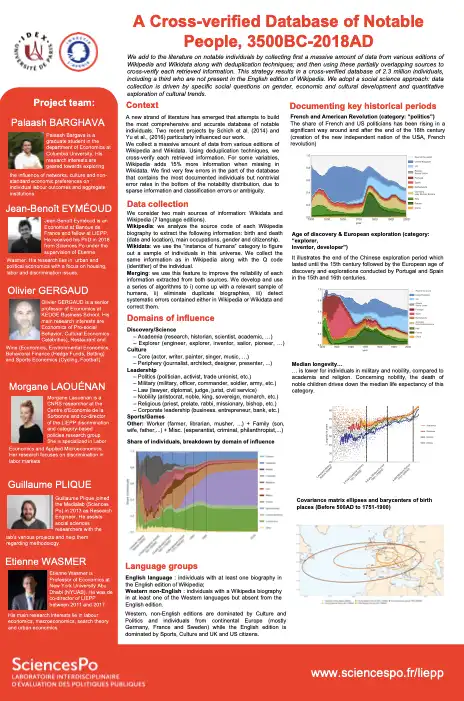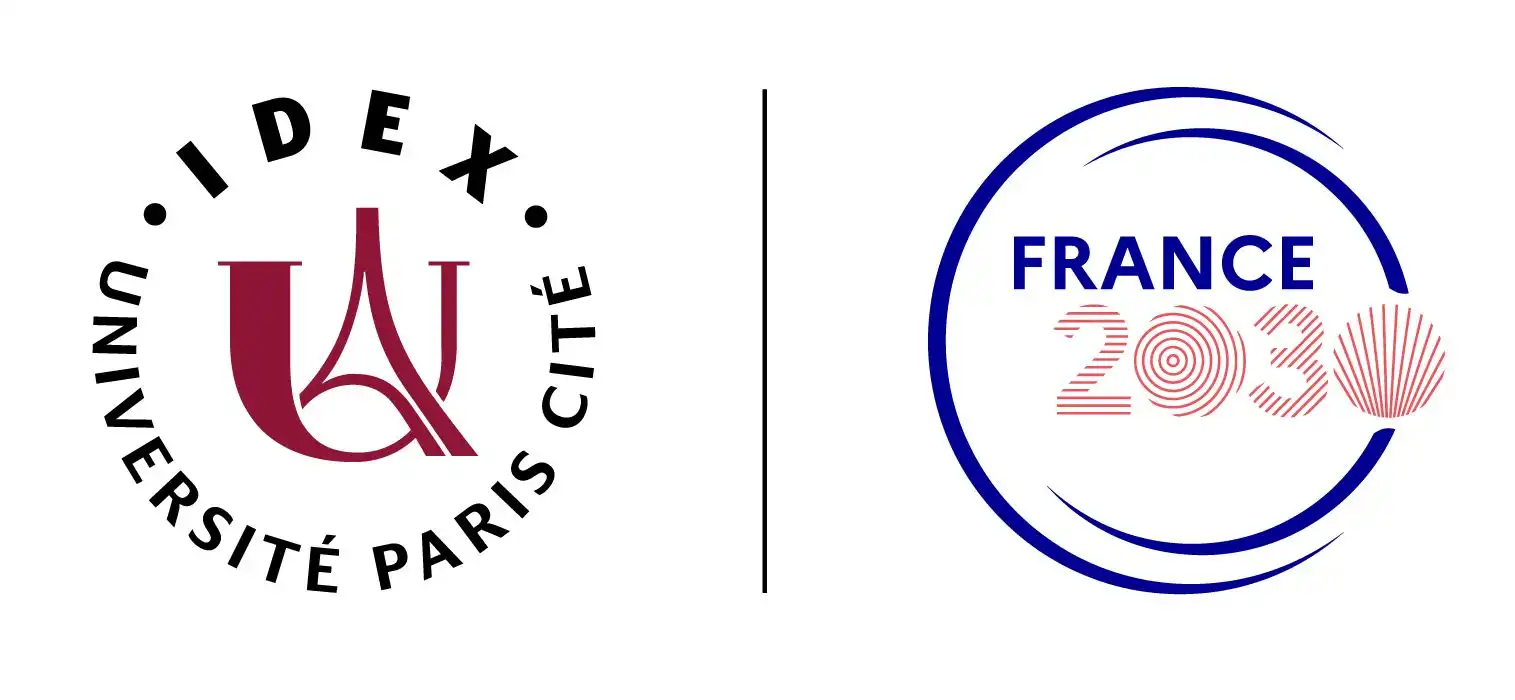
Home>Research>Project>Historical Data of The Big Data and the Concentration of Economic, Cultural, Scientific and Health Activities
Historical Data of The Big Data and the Concentration of Economic, Cultural, Scientific and Health Activities
Project Directors :
- Etienne WASMER (LIEPP & Economic Department/Project Coordinator)
- Jean-Pierre HUGOT (USPC, University of Paris Diderot, Faculty of Medecine)
- Emiliano GROSSMAN (Centre d'études européennes, Sciences Po)
- Paul GIRARD (Research Engeneer at Medialab)
- Patrice MITRANO (Director of Atelier de Cartographie)
Affiliated Researchers :
- Emeric HENRY (Sciences Po)
- Quoc-Anh DO (Sciences Po)
- Mathieu JACOMY (Médialab)
- Jean-Benoît EYMEOUD (Banque de France, LIEPP)
- Benjamin Ooghe-TABANOU (Médialab)
- The team of atelier de cartographie of Sciences Po
- Anne DUMAY (University of Paris Diderot, USPC)
- Nicolas BAUMARD (Researcher on Phsycological Cognitive at Ecole Normale Supérieure)
- Morgane LAOUENAN (CNRS, Paris 1, LIEPP)
- Olivier GERGAUD (Kedge Bordeaux, LIEPP)
This project obtained funding from LIEPP through the 2016 call for proposals.
This project analyzes cities as real "talents incubators". This research aspires to (i) understand the complex relations of works between various forms of talents, either from cultural world, scientific field, from health areas or economic world ii) and to measure their impacts on the long term cities development. The starting point is our collective project called « A Brief History of Human Time » started with the information census on the historical notable people that exists in Freebase (a Google's community database) and the english pages of Wikipedia, which represent a sample of world population about a millionth.
The submitted financial plan is aimed at first at extending the work of collective database and their analyses in world's major languages (French, Italian, German, Turkish, Chinese, Russian, Indian, Japanese, Korean and Portuguese). The scale and the bias decrease allow us to obtain the new mapping which depicts the magnitude of human activities. Afterwards, we analyze different dimensions with spatial and interdisciplinary problem:
a). What is the link between economic activities and enterpreunarial concentration activities
b). What is the link between public health policies and the growth of cities in developing countries
c). What is the causal importance of culture and future growth of cities
d). What is the gender bias in the development of human activities throughout the history
e). How to aggregate knowledge clusters in space and time
F). The link between governance and economics, is it negative?
Poster of the project (June 2021)

Presse coverage:
- 24/06/2018: Running the numbers on Wikimedia Research Newsletter.
- 12/03/2016: A brief history of human time on VOX CEPR Policy Portal.
- 08/02/2016: The work of featured in the project's first publication was cited in a blog post on Rue89.
Publications:
- Anne Dumay, Olivier Gergaud, JP Hugot, “Is Crohn Disease the price to pay today for having survived to the Black Death?”, Journal of Crohn’s and Colitis, 2019.
- Cecilia García-Peñalosa and Étienne Wasmer, Preparing France for the Increasing International Mobility of Talents, Les notes du conseil d’analyse économique, n° 31, May 2016.
- Morgane Laouenan, Olivier Gergaud, Etienne Wasmer, A Brief History of Human Time: Exploring a database of "notable people", LIEPP Working Paper n°46, February 2016

